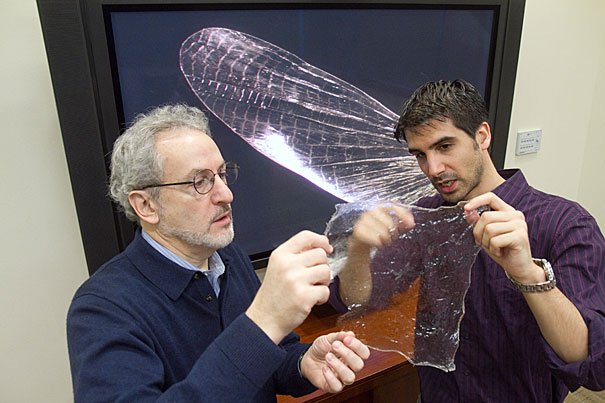The material that promises to dethrone the plastic
Scientists at Harvard University discovered in the wild the key component of making an organic plastic that degrades faster than paper and boosts plant growth. They called him Shrilk.

Almost everything around us has plastic, maybe that's why we produce about 300 million tons of this material a year. But how much of the waste plastic is recycled? Only 3%, while the rest will get stuck somewhere on the planet, staying for centuries in landfills and oceans, damaging ecosystems, food chains and the environment.
A simple plastic bag can take about 500 years to degrade, according to estimates of science, and although efforts have been made to create biodegradable plastics, they have not reached to impact the gigantic industry built around these products, due to its low versatility . At least until now.
The solution to the excess of plastic trash was silently offered by invertebrate animals with their shells: beetles, shrimp, crustaceans. Researchers at the Wyss Institute in Harvard discovered a new formula for making organic plastic based on chitosan, the component that gives elasticity to beetles shell, covers shrimp and shells, as well as giving flexibility to the wings of butterflies and Now serves to become a plastic like never before seen.
This had been studied timidly in the early twentieth century, but with the emergence of conventional plastic was dropped until it was resumed today. Since last year, a team of scientists managed to create an organic plastic that degrades in only two weeks, also serving as a stimulant for the growth of plants. They called him Shrilk.
"We use microelectronics and nanotechnology techniques to design the structure and extraordinary properties that chitosan possesses in nature so that it can be used for other applications," explains Dr. Javier Fernández, one of the people responsible for this research Which already adds three publications in this regard.
The most important: massif
A great advantage is that chitosan is cheap because it has traditionally been used as waste, for example heads and shrimp shells in the fishing industry. It is also very common, it is the second organic material more abundant in the Earth after the pulp, comments Fernandez.
Currently, most bioplastics are made of cellulose, material of plant origin that is extracted from the trees. Most of them are used in containers and containers for food or beverages, but it has not been possible to use them for complex 3D shapes that can be mass-produced with the same resistance as ordinary plastic.
Shrilk, reproducing the natural properties of chitosan, has a force that doubles the plastic and allows large-scale manufacture of everyday plastic objects and even print in 3D with the same firmness as in its non-biodegradable version, from bags, containers and toys Even cell phones or medical prostheses. Initially, this bioplastic required fibroin, a silk protein that made its production quite expensive, but the Wyss team managed to find the exact formula to create a chitosan without silk.
"There is an urgent need in many sustainable materials industries that can be mass-produced," insists Dr. Donald Ingber. "Our scalable manufacturing method shows that chitosan, which is readily and cheaply available, can serve as a viable bioplastic that could be used instead of conventional plastics for numerous industrial applications."
As a cheap and environmentally safe alternative, this new bioplastic could be used to make trash bags, containers and diapers that break down in a few weeks, while serving as fertile soil for plant growth.
Fernandez says that in about a couple of years the production of chitosan can be on a large scale. He believes that this discovery goes beyond plastic bags, something that can be solved simply with legislation. The use of plastic at a higher scale "does require a technological development with new materials that have no environmental impact."
Even the shrilk production technique requires that the companies modify their production process and that is why the team continues to work and perfecting their applications in order to take this innovation from the laboratory and take it to the world of industry, achieving a true environmental impact.
Good to see their are alternative forms of materials arising that can replace plastic. Hemp can easily replace plastic in no time. Thanks for sharing...peace!
Yes man it will be a powerful solution